“Hot runner molding conserves material by eliminating waste and streamlining the manufacturing process. Its significance in the plastic industry is profound as it offers a more sustainable, cost-effective, and time-efficient production. “
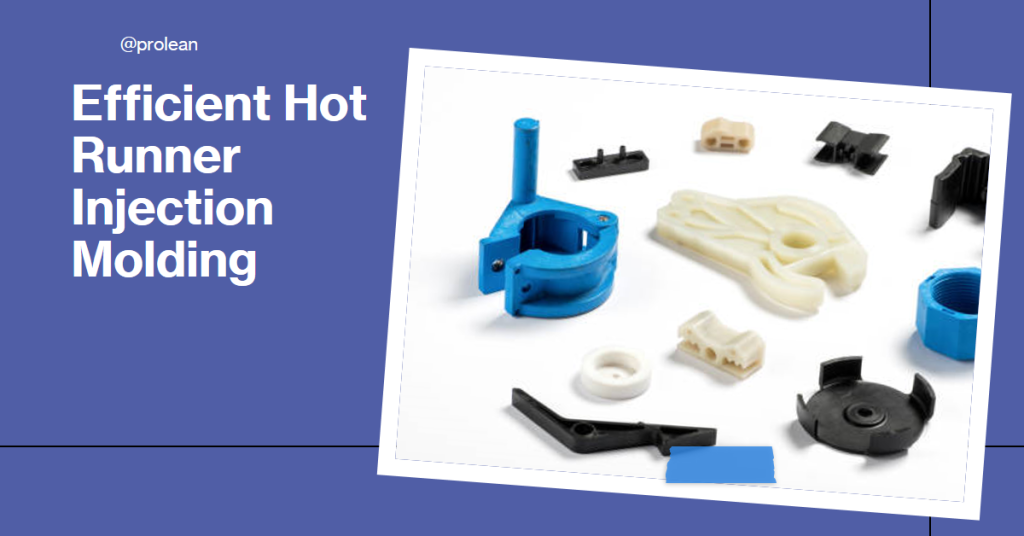
Among the different plastic manufacturing approaches, hot runner injection molding has gained popularity for its efficiency, cost-effectiveness, and intricacy. It is a method where molten plastic is injected into a mold through heated channels, maintaining a consistent temperature throughout the cycle. Next, injection molding is extremely versatile and creates diverse plastic components – from simple household items to complex automotive parts.
This article will demystify this technique, exploring its intricacies, types, benefits, and comparison with other methods.
What is Hot Runner Injection Molding?
Hot Runner Injection Molding fundamentally involves injecting molten plastic into mold cavities through heated channels, known as ‘hot runners’. These specialized channels ensure the plastic remains molten, optimizing the molding process. This technique enhances efficiency by maintaining a consistent plastic temperature throughout the production cycle.
Firstly, hot runner molding reduces material waste significantly. Since the plastic remains molten, there’s no solidified runner to discard. This aspect makes it environmentally friendly. Secondly, it speeds up the production process. There’s no need to cool and reheat the runners. Thus, it saves time between cycles. Additionally, it enhances product quality. The consistent temperature prevents defects in the final product.
What is a Hot Runner System?
At the heart of this process is the hot runner system. This system is a critical component. It consists of heated channels within the mold. These channels transport the molten plastic. The system includes various parts, such as manifolds, nozzles, and temperature controllers.
The manifold receives molten plastic from the injection molding machine. Then, it channels the plastic into multiple paths. Each path leads to a specific mold cavity. The nozzles are at the end of these paths. They control the flow of plastic into the cavities.
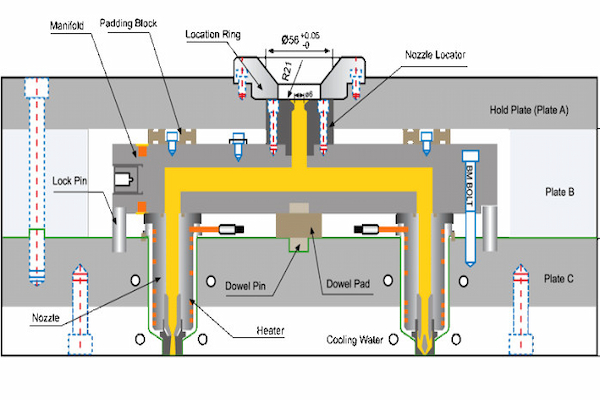
Hot runner system
Temperature control is vital in this system. It ensures uniform heat across the channels. This uniformity is critical for consistent product quality. The hot runner controller manages this aspect. It adjusts temperatures as needed during the process.
The Components of Hot Runner Injection Molding
The hot runner system in injection molding involves several components. These components work in unison, ensuring a seamless production cycle. The primary components include the manifold, nozzles, and temperature controllers. Each serves a specific purpose. Together, they maintain the plastic in a molten state.
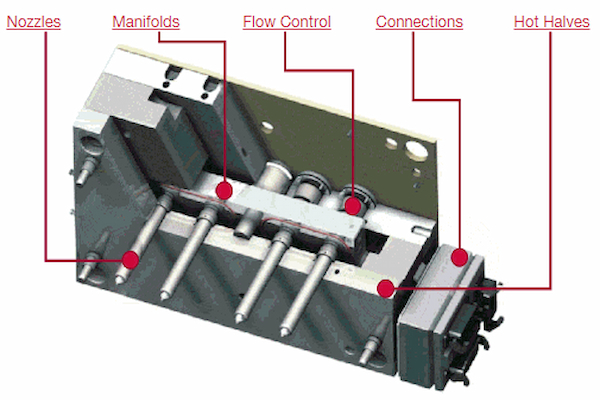
Hot runner components
Let’s discuss each component in brief:
1. The Manifold
It serves as a distribution hub for molten plastic, positioned within the mold. The manifold receives injection molding raw plastic from the injection unit. Then, it channels the plastic to various mold cavities. So, the design is crucial for even distribution and consistent quality across all parts. Next, they withstand high temperatures and corrosive materials.
2. Nozzles in Hot Runner Systems
Nozzles in hot runner systems are critical for precise plastic flow. Located at the end of the manifold, they direct plastic into the mold cavities. Each nozzle is individually controllable. Therefore, it allows for precise regulation of flow and pressure. The design of nozzles varies depending on the application.
3. Temperature Controllers
These are essential for hot runner systems. They regulate the temperature of the manifold and nozzles. This regulation is crucial for maintaining the plastic in a molten state. Advanced controllers can adjust temperatures in real time. This adaptability is vital for producing high-quality parts. Temperature consistency prevents defects like warping or shrinkage.
4. Hot Runner Gates
Hot runner gates are where the plastic enters the mold cavity. They are strategically placed for optimal filling. The design of the injection molding gate affects the part’s appearance and strength. Proper gate placement ensures efficient flow and cooling. This results in better surface finish and structural integrity.
5. Heater Bands
Heater bands are wrapped around the manifold and nozzles. They generate the heat necessary to keep plastic molten. These bands are designed for uniform heat distribution. Uneven heating can cause quality issues in the final product. The material and design of heater bands vary based on application needs. The temperature surrounding the leads in hot runner systems cannot exceed 482°F (250°C).
6. Thermal Insulation Plates
Thermal insulation plates prevent heat loss. They are placed between the hot runner system and the mold plates. This insulation is crucial for maintaining temperature consistency. It also protects the mold and machine from excessive heat. Proper insulation ensures energy efficiency and prolongs equipment life.
7. Hot Runner Seals
Hot runner seals are used to prevent leaks. They are inserted at critical junctions within the system. High-quality seals are vital for maintaining system integrity. They withstand high pressures and temperatures. Effective sealing ensures consistent plastic flow and quality.
8. Wiring and Electrical Components
The wiring and electrical components power the system. They connect heaters, sensors, and controllers. Quality wiring is essential for system reliability. It ensures accurate temperature control and safety. Electrical components must comply with industry standards.
9. Sensors and Feedback Systems
Sensors monitor temperature and pressure in the system. They provide feedback to the controllers. This information is critical for adjustments during production. Advanced sensors enhance precision and consistency.
Try Prolean Now!
Types of Hot Runner Systems
Hot runner systems are diverse, catering to various manufacturing needs. Each type has unique features and benefits. Understanding these differences could help you choose the right system for their specific applications. Let’s explore the main types of hot runner systems.
Valve Gate Hot Runner System
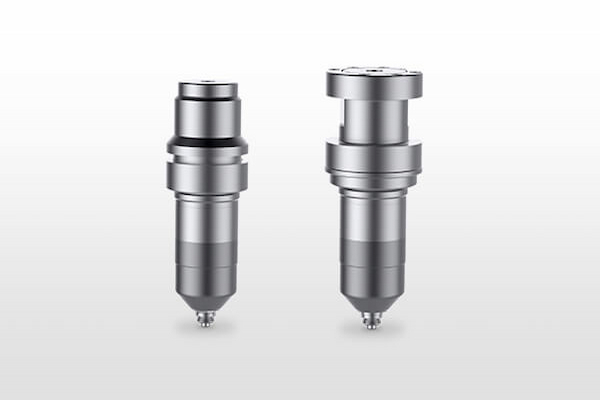
Valve gate hot runner
The Valve Gate Hot Runner system uses mechanical valves to control plastic flow. These valves can operate pneumatically or hydraulically. The precise control of the valve gates allows for high-quality parts with minimal marks. Next, this system is ideal for large parts and high-viscosity materials, and the valve gate system excels in creating parts with excellent surface finish.
Open Gate Hot Runner System
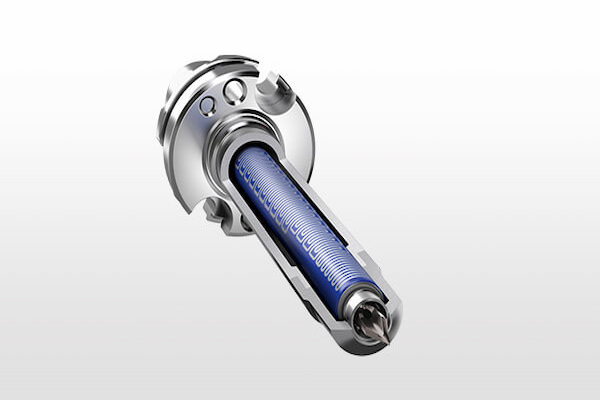
Open hot runner
The molten plastic flows continuously in an open hot runner system. There’s no mechanical control like in valve gate systems. This simplicity makes it cost-effective, easy to maintain, and suitable for simpler parts with lower aesthetic requirements. However, it’s less precise than valve gate systems. Open gate systems are appropriate for small, non-visible parts.
Sequential Valve Gate System
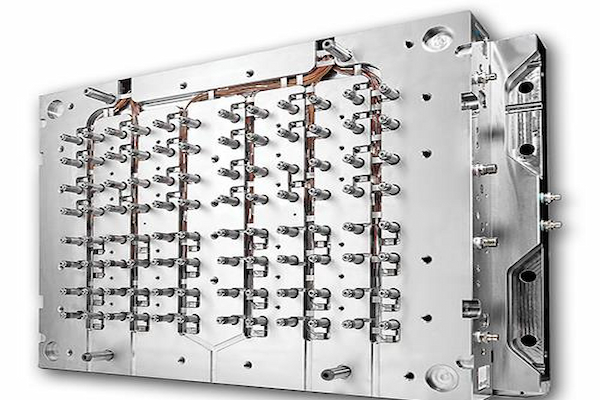
Sequential valve gating in hot runner molding
The Sequential Valve Gate system is a more advanced version. It allows for sequential control of multiple gates. This system is ideal for large parts with complex designs. It prevents warping and sink marks by controlling the flow and pressure of plastic. Sequential systems are crucial in automotive and large consumer products. They ensure uniform filling and cooling, enhancing product integrity.
Insulated Runner System
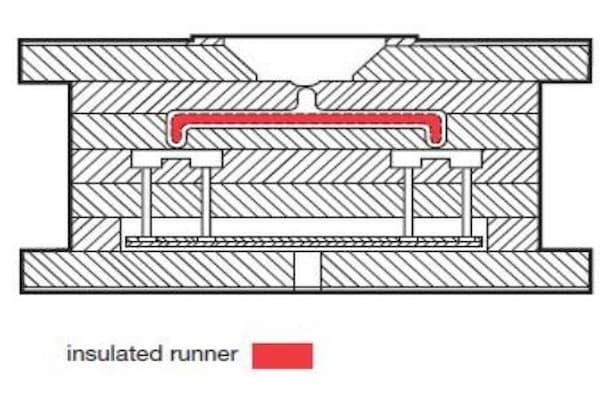
Insulated runner
Insulated Runner systems keep the plastic molten through passive heat retention. Unlike other systems, they don’t actively heat the runners. This simplicity reduces maintenance and energy costs. However, it’s limited to materials with a wide processing window. Insulated runner systems are preferred for medium to high-volume production.
Hot Tip Gate System
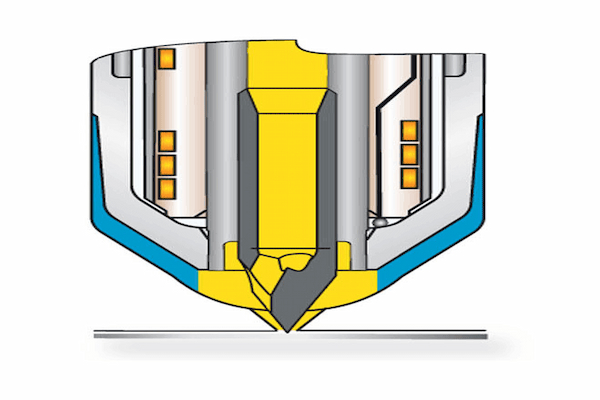
Hot tip gating
Hot Tip Gate systems specialize in single-point gating. They feature a heated tip at the gate point. This system is ideal for multi-cavity molds producing identical parts. It’s ideal for fast-cycling, small to medium parts in low-volume manufacturing. Hot tip gate systems are popular in electronics and medical device manufacturing. They provide excellent control over the flow and appearance of the part.
Stack Mold Hot Runner System
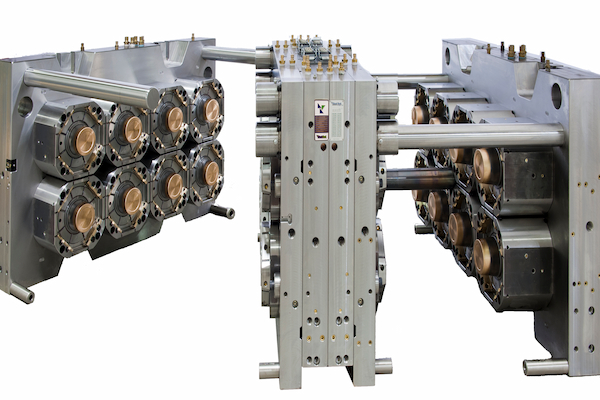
Stack mold runner system
Stack mold runners feature multiple mold levels, doubling the output. This system is efficient and space-saving. Subsequently, it’s used in high-volume industries like packaging and disposables. Stack molds increase productivity without increasing machine size.
Advantages of Hot Runner Injection Molding
Hot Runner Injection Molding is an innovative approach that significantly enhances the efficiency and quality of the plastic production process. This method is not just about faster production; it also emphasizes sustainability and cost-effectiveness.
The hot runner system optimizes the injection molding process in several key ways. These include reduced waste, improved cycle times, and enhanced product quality.
Let’s explore these benefits in detail:
- Reduced Material Waste: Hot runner systems eliminate the creation of runners, significantly reducing plastic waste.
- Faster Cycle Times: The absence of runners means no cooling time is required, speeding up the production process.
- Consistent Part Quality: Uniform heat distribution ensures consistent quality across all produced parts.
- Energy Efficiency: Maintaining the plastic in a molten phase requires less energy for reheating.
- Reduced Labor Costs: Automated systems decrease the need for manual labor in runner removal and recycling.
- Versatility in Material Use: Hot runners can handle a variety of plastic materials, offering flexibility in production.
- Improved Aesthetic Quality: The technology allows for better surface finish and detail in final products.
- Decreased Risk of Defects: Consistent temperature control reduces the likelihood of defects like warping or shrinkage.
What are the Hot Runner Injection Molding Applications?
It is a widely used method across various industries. This method’s ability to efficiently produce high-quality, complex parts makes it indispensable. Its applications are vast and diverse, from automotive to consumer goods. Furthermore, its influence extends to sectors requiring precision and volume.
Automotive Industry
In the automotive sector, the precision and durability of components are paramount. For instance, it produces detailed dashboard panels, ensuring functionality and aesthetics. Lighting components are also created using this method for their precision and quality, like headlights and taillight housings.

Automotive dashboards
Under-hood components like air intake manifolds and engine covers require the durability and heat resistance that hot runner systems can provide. Other automotive parts include interior and exterior door handles, intricate components of the car’s bumper system, and detailed interior consoles, all showcasing the technology’s versatility and efficiency.
Medical Industry
The medical industry demands precision, sterility, and reliability, and Hot Runner Injection Molding meets these requirements. Surgical tools, including various instrument handles, are manufactured with this method for their precision and durability. Drug delivery systems such as inhalers, insulin pens, and auto-injectors rely on the high-quality plastic parts produced by hot runner systems
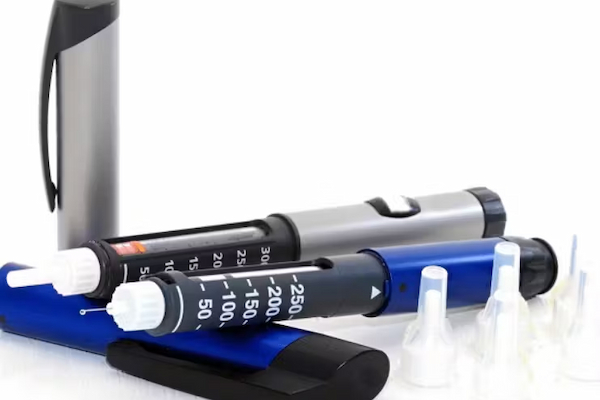
Injection molded insulin pens
Additionally, medical housings for machines, like MRI and X-ray machines, disposable syringes, and intricate components used in orthopedic implants and braces are all produced using hot runner injection molding.
Consumer Electronics
In consumer electronics, hot runner molding creates parts like smartphone casings, where detail and durability are crucial. Laptop keyboards, including individual keys and frames, are crafted for precision and consistency.

Injection molded enclosure
Television frames and remote controls require the durability and ergonomic design that this technology offers. Even in smaller electronics like headphones and camera components, the precision and quality of hot runner injection molding are indispensable.
Packaging Industry
The packaging industry heavily relies on Hot Runner Injection Molding for various products. Next, injection molded bottle caps for beverages and pharmaceuticals offer precision and consistency.

Spray nozzles for bottles
Food containers, cosmetic packaging, pharmaceutical packaging, pump dispensers for soaps and lotions, and spray nozzles for bottles and aerosols are all made using this technology, showcasing its versatility and efficiency in producing high-quality packaging solutions.
Try Prolean Now!
Hot Runner Vs. Cold Runner: What you Need to Know?
The choice between hot runner and cold runner systems is crucial. Each system has distinct characteristics and applications, making them suitable for different manufacturing needs. Hot runner systems utilize heated channels to keep the plastic molten, offering efficiency and reducing waste. In contrast, cold runner systems allow the plastic in the channels to cool and solidify, then require removal and recycling. Furthermore, research has been carried out which concludes about the effectiveness of hot runners over cold runners. Source.
Let’s compare them to illustrate these differences clearly.
Table Cold Runner vs. Hot Runner
| Feature | Hot Runner System | Cold Runner System |
| Material Waste | Minimal, as the system recycles molten plastic. | Higher, due to solidified runners. |
| Cycle Time | Faster, as no cooling of runners is required. | Slower, due to cooling and removal of runners. |
| Part Quality | Higher, consistent quality due to temperature control. | Can vary, the potential for defects in runners. |
| Cost | Higher initial cost, but lower operating costs. | Lower initial cost, but higher operating costs. |
| Maintenance and Complexity | More complex, requiring regular maintenance. | Simpler and easier to maintain. |
The Cost of Hot Runner Injection Molding
The initial investment in Hot Runner is notably higher than in traditional Cold Runner Injection Molding. It is primarily due to its sophisticated components like heated manifolds, advanced nozzles, and temperature control systems.
Despite the higher upfront costs, the long-term benefits of hot runner systems often outweigh the initial investment. Next, the efficiency gains in production and the waste reduction can lead to significant operational cost savings, especially in large-scale manufacturing. Additionally, these systems are generally more energy-efficient than cold runner systems, as they don’t require reheating solidified runners, reducing injection molding costs over time.
Key factors in hot runner injection molding price:
- Higher Initial Investment: Due to sophisticated components and technology.
- Maintenance Costs: Regular upkeep of heating elements and control systems.
- Material Cost Savings: Efficient use of plastic materials, minimizing waste.
- Energy Efficiency: Lower energy consumption compared to cold runner systems.
- Long-Term Savings: Operational efficiency leads to cost savings in large-scale production.
Mold your Design into a Product at Prolean
At Prolean, we specialize in transforming your injection molding designs into tangible products. Our Injection Molding Services are tailored to meet diverse needs. We utilize hot runner molding for efficiency and precision. This method ensures high-quality production with minimal waste. Furthermore, our services cater to various industries, offering versatility and reliability.
We also excel in rapid prototyping, a critical phase in a product that allows for quick validation of design functionality. This process significantly reduces the time from concept to product. We help clients iterate designs swiftly, ensuring the final product meets their exact specifications and quality standards.
Furthermore, Prolean’s Mod manufacturing approach integrates modern techniques with traditional craftsmanship. This blend ensures each product is made to the highest standard. Our approach is not just about creating products; it’s about bringing your vision to reality.
Read more:
- Silicone Injection Molding: Process, Advantages, and Applications
- Compression Molding vs Injection Molding: Which is Best for You?
Summing Up
Hot runner molding marks a notable leap in plastic manufacturing technology. Its unmatched efficiency and superior quality set it apart. This method significantly reduces material waste, streamlining the production process.
Additionally, it accelerates cycle times, boosting overall productivity. Consistently high-quality products are a hallmark of this technology. As advancements continue, hot runner systems will evolve. They will offer even greater capabilities and diverse applications. Thus, hot runner injection molding is a pathway to innovative manufacturing solutions that bring efficiency to plastic production.
FAQs
What is hot runner molding?
It is a process where heated channels keep plastic molten during injection molding, leading to efficient, waste-free production.
Why use hot runner injection molding?
It’s used for its ability to reduce waste, speed up cycle times, and ensure consistent product quality, making it ideal for high-volume manufacturing.
How does hot runner injection molding reduce waste?
Hot runner systems minimize waste by maintaining the plastic in a molten state within the runner, eliminating the need to trim and recycle runners.
Can hot runner systems handle different types of plastic materials?
Yes, hot runner systems are versatile and can be adapted to work with a wide range of plastic materials.
What are the main components of a hot runner system?
Key components include the manifold, nozzles, and temperature controller.
Is hot runner injection molding more expensive than traditional methods?
While the initial investment may be higher, hot runner systems can be more cost-effective in the long run due to reduced waste and faster cycle times.
Can hot runner systems improve product quality?
Yes, they provide more control over the molding process, leading to higher quality and more consistent products.
Resources
- Sammy. (2015, September 9). Hot Runner-Nozzle Heater [Online forum post]. Injection Molding Online Forum. Retrieved from http://www.injectionmoldingonline.com/forum/showthread.php?t=651
- Kale, P. D., & Sahu, A. R. (2021). A literature review on injection molding process based on runner system and process variables. IOP Conference Series: Materials Science and Engineering, 1017(1), 012031. https://doi.org/10.1088/1757-899X/1017/1/012031

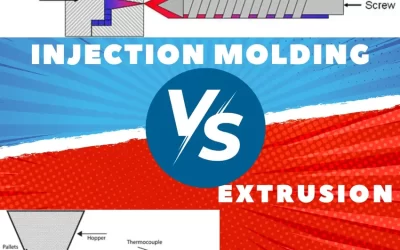
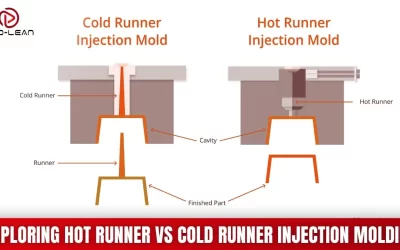
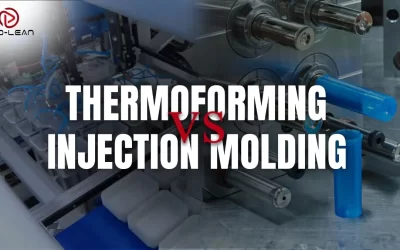
All the hot runner injection molding information’s are nicely gathered in this article!